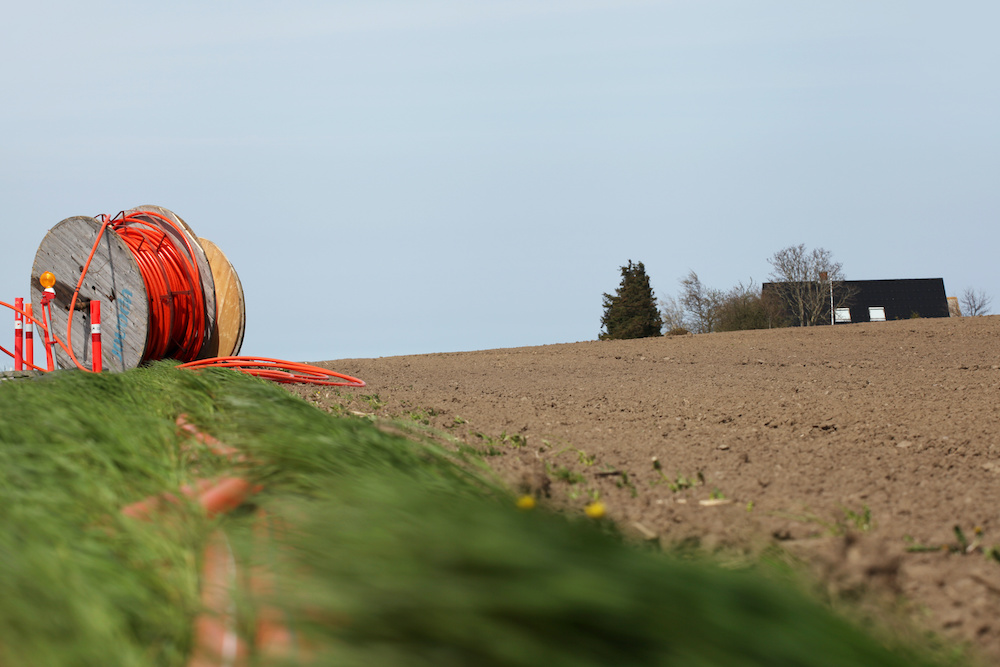
- Details
- By Chez Oxendine, Tribal Business News
The Tribal Broadband Connectivity Program has issued more than $1.35 billion in funding, according to a National Telecommunications and Information Administration (NTIA) announcement Wednesday.
The latest round of funding awarded $602 million to 23 tribal projects, the largest single distribution yet from the program’s $1.98 billion pool of funding.
Mitch Landrieu, senior White House adviser in charge of implementing the Infrastructure Investment and Jobs Act, called the announcement a “huge milestone” in an interview this afternoon with Tribal Business News.
Want to learn more about the Tribal economy? Get the free Tribal Business News weekly newsletter today.
“We can tell from the way things have been going that high speed Internet is not a luxury anymore, it’s a necessity,” Landrieu said. “From running businesses to doing homework to accessing health care, to using modern agricultural techniques, the internet’s critical.”
The announcement comes as the Tribal Broadband Connectivity Program nears the end of its first round of funding, falling well short of the $5 billion ask Indian Country supplied in response to the initial funding opportunity.
While the program’s initial $980 million pot, stemming from the American Rescue Plan Act of 2021, received a secondary $2 billion infusion through the Infrastructure Investment and Jobs Act, Landrieu conceded the initiative remained “oversubscribed.”
“We’re seeing that [oversubscription] across all our programs,” Landrieu said. “You may remember [President Joe Biden] asked Congress for substantially more, but they reduced that number … while the need is still much higher. So we’re not surprised that for all of the programs, people are asking for more than is in the pot.”
Landrieu said the $3 billion in funding eventually made available was the “largest tribal grant program” in U.S. history and pointed to other initiatives complementing the NTIA funding — such as Biden’s Affordable Connectivity Program (ACP) — as ways of offsetting some of the remaining costs.
The ACP program provides a $75 subsidy to qualifying households in need of assistance with their internet bill. Notably, Alaskan Natives speaking to Tribal Business News have placed their internet bills between $300 and $500 a month.
“We’re hoping that in the years to come, folks who make these decisions continue to do more because of how important this program is and how much it’s going to improve people’s lives,” Landrieu said.
The Tribal Broadband Connectivity Program, along with the Affordable Connectivity Program, serve as part of a “definitive strategy” to work with state and tribal governments in getting more people online, Landrieu said. Both programs are part of the Commerce Department’s effort to expand broadband in underserved communities.
According to a report on tribal broadband by the Government Accountability Office (GAO), the Department of Commerce needs a plan that is more concrete.
In his call with Tribal Business News today, Landrieu acknowledged the hiccups in the Tribal Broadband Connectivity Program’s initial implementation, especially in regards to asking tribes in need of internet service to apply online.
“That’s one of the conundrums, isn’t it, when you’re asking people to apply,” Landrieu said. “So one of the ways we’re trying to fix that is we’re trying to work with all of the travel communities and get them technical assistance in person and by phone and by other means that don’t require internet access to apply for dollars to have internet.
“We’re getting the kinks out of that process as we speak. As we move on, because this is a program that’s going to last for some time, we’re going to get much better at that.”
As the initial funding opportunity winds down — the remaining grants are set to roll out over the course of the fall, according to the NTIA — the Tribal Broadband Connectivity Program will open up a new opportunity for the remaining $1 billion in the future.
“This President from day one wants us to get the money out there and get it to tribal communities, and that’s what we're doing,” Landrieu said. “It’s just important that we keep working really hard to make sure these tribal communities get what it is that they deserve because they’ve been left out for so long, and this is a great step forward in a fairly short period of time.”
Help us defend tribal sovereignty.
At Native News Online, our mission is rooted in telling the stories that strengthen sovereignty and uplift Indigenous voices — not just at year’s end, but every single day.
Because of your generosity last year, we were able to keep our reporters on the ground in tribal communities, at national gatherings and in the halls of Congress — covering the issues that matter most to Indian Country: sovereignty, culture, education, health and economic opportunity.
That support sustained us through a tough year in 2025. Now, as we look to the year ahead, we need your help right now to ensure warrior journalism remains strong — reporting that defends tribal sovereignty, amplifies Native truth, and holds power accountable.
 The stakes couldn't be higher. Your support keeps Native voices heard, Native stories told and Native sovereignty defended.
The stakes couldn't be higher. Your support keeps Native voices heard, Native stories told and Native sovereignty defended.
Stand with Warrior Journalism today.
Levi Rickert (Potawatomi), Editor & Publisher
